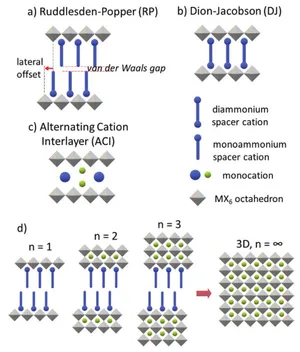News and events
Postdoc available to work with Dr. Milot on THz microscopy
The Department of Physics seeks to appoint a Research Fellow to join the Ultrafast and Terahertz Photonics group. The position is for 2 years with the possibility of extension and has a start date of 1 November 2022.
Your work will involve the development of a custom photoluminescence and terahertz scatting near-field microscope (SNOM) as part of a larger project to study charge-carrier dynamics in hybrid metal halide perovskites at the nanoscale.
For more details see the full advert.
Congratulations to Hannah & Daniel!
A big congratulations to Hannah Hatcher, for successfully defending her thesis on "In Vivo THz Spectroscopy for Quantitative Skin Evaluation". Thanks to Prof. Zach Taylor (Aalto) for acting as the external examiner, and James as internal.
And a further giant congratulations to Daniel Coxon, who also defended his thesis recently, on "A study of the relaxation dynamics of local vibrational modes associated with hydrogen in diamond". We are exceptionally grateful to Prof. Mike Ashfold (Bristol) and Prof. Julie MacPherson (Warwick Chemistry) for acting as the examiners.
Welcome to Hui Liang, Jacob and Justas!
We are delighted to welcome three new PhD students to the group! Jacob Young and Hui Liang Ou are working with Emma, while Justas Deveikis is starting with Becky & James. Best of luck for your research.
Postdoc available to work with Dr Lloyd-Hughes on THz devices
The Department of Physics seeks to appoint an ambitious Research Fellow to join the Ultrafast and Terahertz Photonics group at the University of Warwick. The position is up to three years in duration with a start date by 1 September 2021.
Your research goals will be related to developing and applying THz imaging and spectroscopy techniques to detection of skin cancer and other skin conditions. Particular focus will be on designing, fabricating and testing novel THz photoconductive devices based on multiple active pixels.
For more details see the full advert.
Folusho's review on layered hybrid perovskites is published
Congratulations to Helen on the publication of her first (joint) first author paper, which is a review of recent progress understanding how layered semiconducting perovskites can be designed and used in photovoltaic applications.
Layered Perovskites in Solar Cells: Structure, Optoelectronic Properties, and Device Design

D. Sirbu, F. H. Balogun, R. L. Milot and P. Docampo
Advanced Energy Materials (May 2021)
Layered hybrid perovskites (LPKs) have emerged as a viable solution to address perovskite stability concerns and enable their implementation in wide-scale energy harvesting. Yet, although more stable, the performance of devices incorporating LPKs still lags behind that of state-of-the-art, multi-cation perovskite materials. This is typically assigned to their poor charge transport, currently caused by the choice of cations used within the organic layer. On balance, a compromise between efficiency and stability is sought, involving careful control of phase purity and distribution, interfaces and energy/charge transfer processes. Further progress is hindered by the difficulty in identifying the fundamental optoelectronic processes in these materials. Here, the high exciton binding energy of LPKs lead to the formation of multiple photoexcited species, which greatly complicate measurement interpretation. In this light, this review gives an overview of how complementary measurement techniques must be used to separate the contributions from the different species in order to identify device bottlenecks, and become a useful tool to narrow down the limitless list of organic cations. A move away from making compromises to mitigate the impact of poor charge transport is required. The root of the problem must be addressed instead through rational design of the interlayer cations.
Postdoc available to work with Dr MacPherson on THz imaging
The Department of Physics seeks to appoint an ambitious Research Fellow to join the Ultrafast and Terahertz Photonics group at the University of Warwick. The position is up to three years in duration with a start date by 1 September 2021.
Your research goals will be related to developing and applying THz imaging and spectroscopy techniques to detection of skin cancer and other skin conditions. Particular focus will be on integrating THz image approaches with robotics, and speeding up and improving the accuracy of terahertz data acquisition.
For more details see the full advert.
Welcome to Nathaniel Gallop
We welcome Nathaniel Gallop to the group as a new postdoc, who will be working with Dr Milot on her EPSRC project "Optoelectronic properties of hybrid metal halide perovskites: from nanoscale to devices". Nathaniel joins us from Imperial, where he worked with Dr Bakulin & Prof Nelson on the vibronic control of organic electronic devices.
Congratulations to Maria!
Many congratulations to Maria, who successfully defended her PhD thesis on 21st October. Maria's thesis on "Ultrafast terahertz and optical spectroscopy of 1D van der Waals nanomaterials" describes her work on carbon nanotubes and transition metal dichalcogenide nanotubes. Thanks to her examiners, Prof. Junichiro Kono @Rice and our own Dr Rebecca Milot. Well done Maria!
Postdoc available to work with Dr Milot on perovskites
A new postdoctoral research fellow position is available in the group, to work with Dr Rebecca Milot on charge dynamics in hybrid metal halide perovskites. Full details here - apply by 28th October 2020.
Welcome to our new students!
A warm welcome to our new postgrad students: Goncalo Costa, Junn Keat and Justas Deveikis, who have just started their research in the group.
